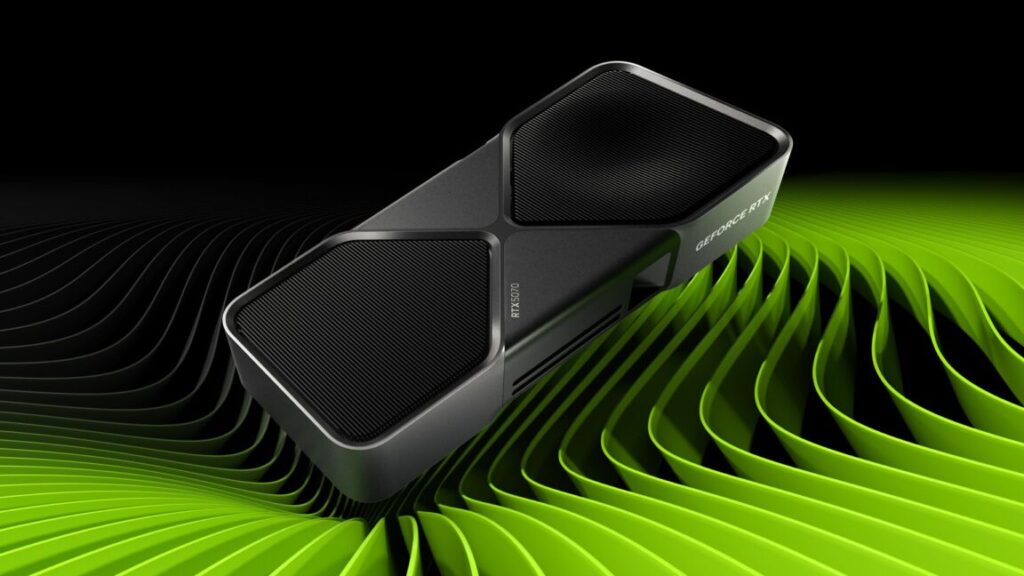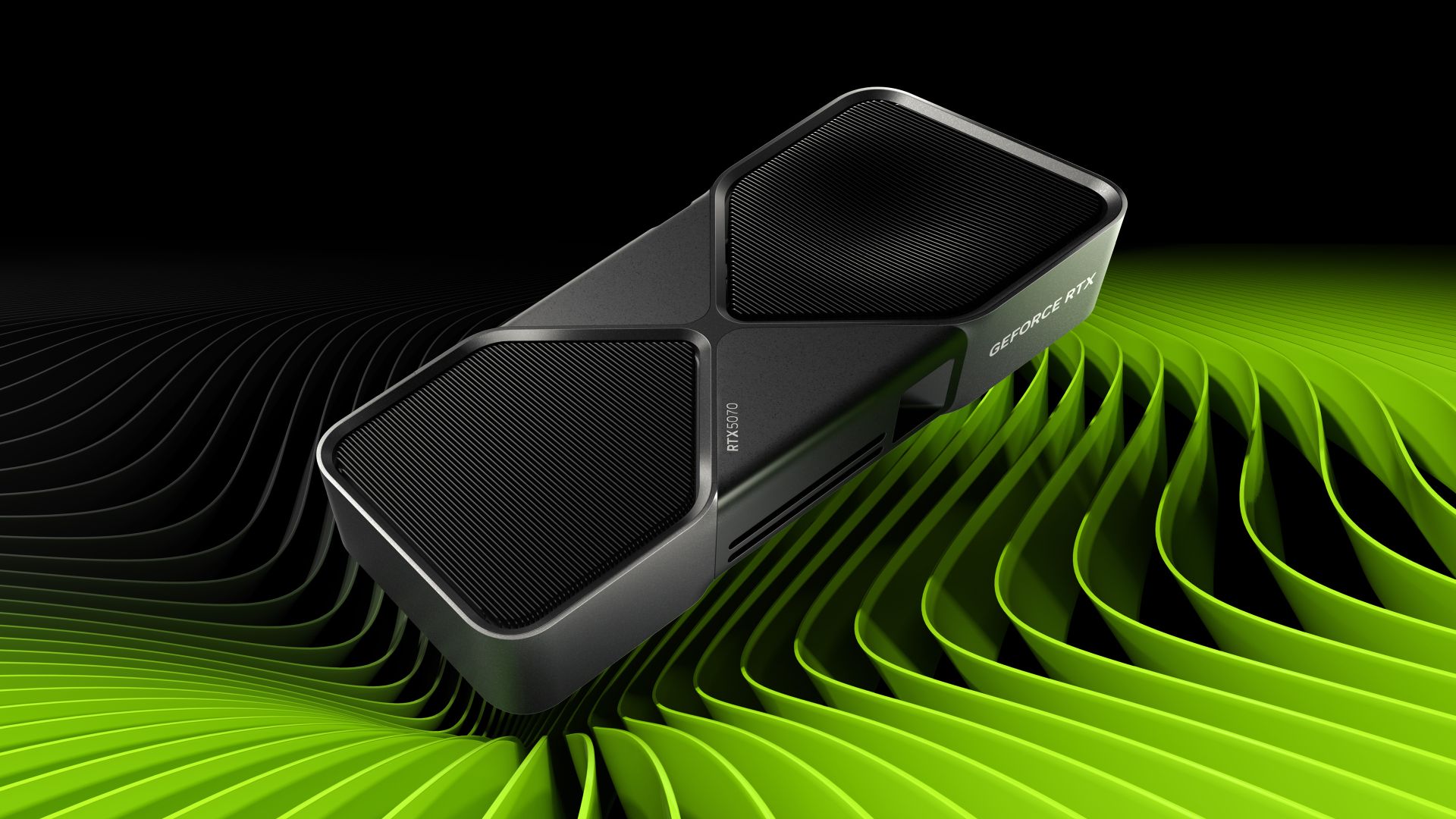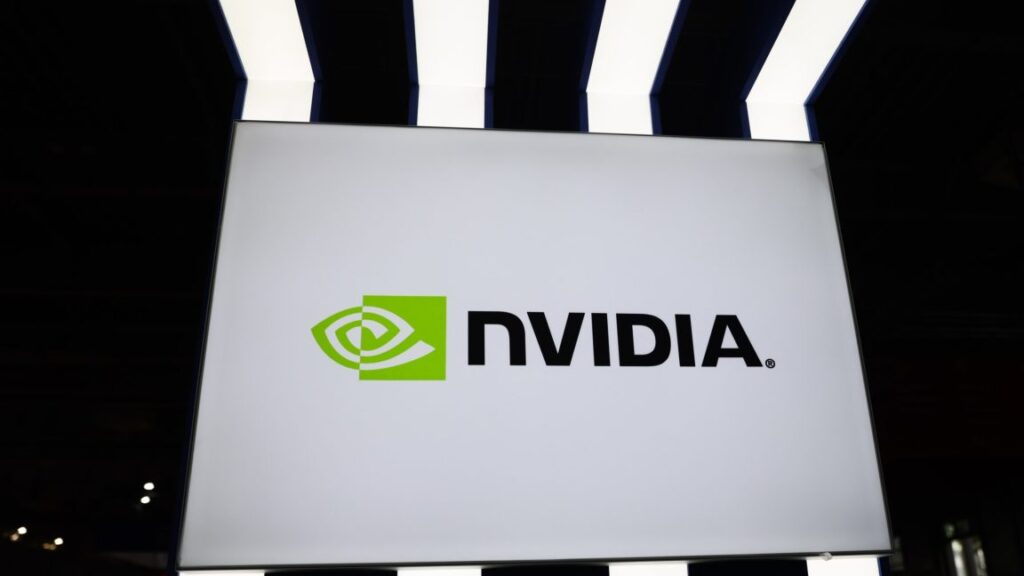New GeForce 50-series GPUs: There’s the $1,999 5090, and there’s everything else
Nvidia has good news and bad news for people building or buying gaming PCs.
The good news is that three of its four new RTX 50-series GPUs are the same price or slightly cheaper than the RTX 40-series GPUs they’re replacing. The RTX 5080 is $999, the same price as the RTX 4080 Super; the 5070 Ti and 5070 are launching for $749 and $549, each $50 less than the 4070 Ti Super and 4070 Super.
The bad news for people looking for the absolute fastest card they can get is that the company is charging $1,999 for its flagship RTX 5090 GPU, significantly more than the $1,599 MSRP of the RTX 4090. If you want Nvidia’s biggest and best, it will cost at least as much as four high-end game consoles or a pair of decently specced midrange gaming PCs.
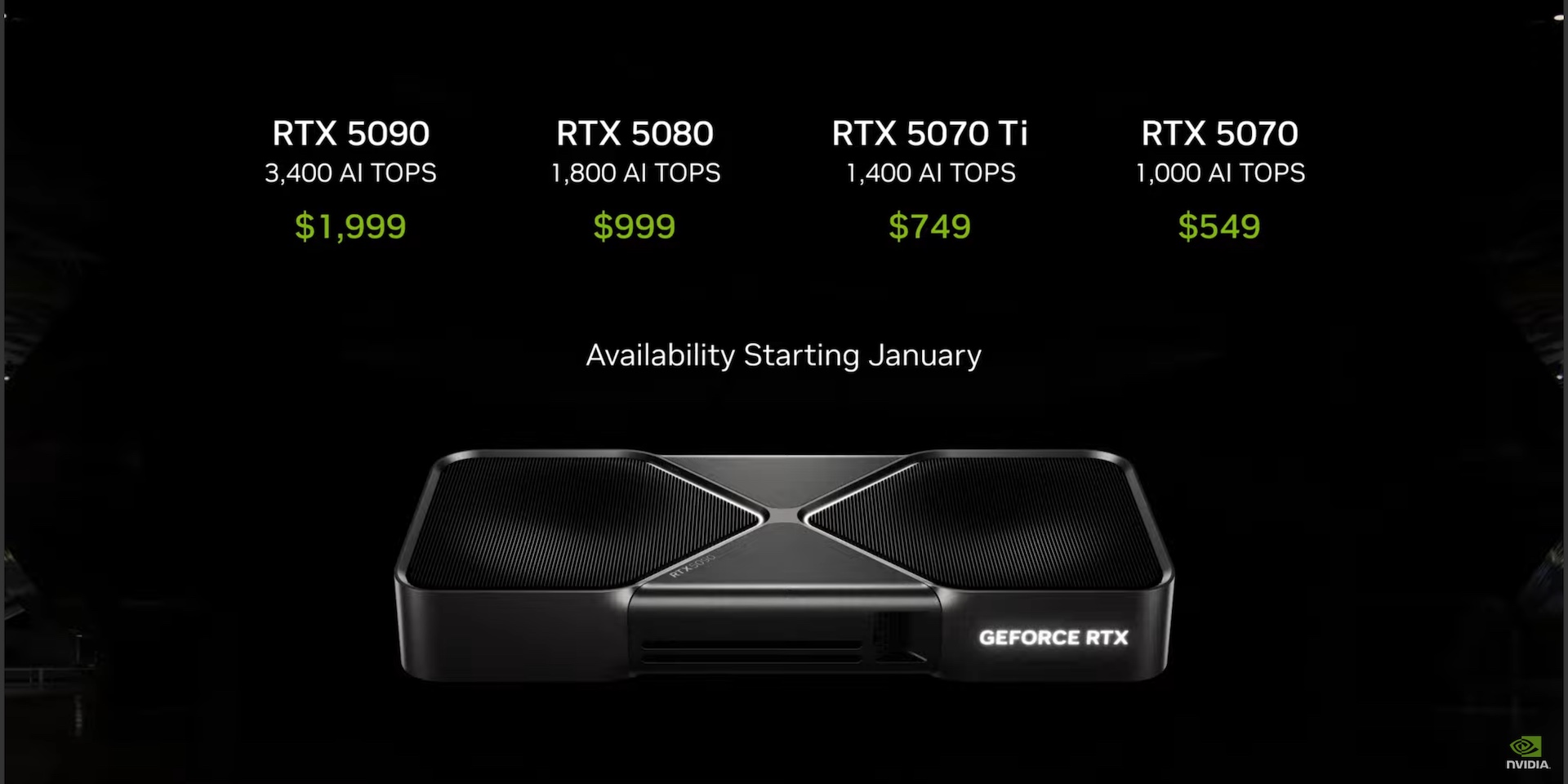
Pricing for the first batch of Blackwell-based RTX 50-series GPUs. Credit: Nvidia
Nvidia also announced a new version of its upscaling algorithm, DLSS 4. As with DLSS 3 and the RTX 40-series, DLSS 4’s flagship feature will be exclusive to the 50-series. It’s called DLSS Multi Frame Generation, and as the name implies, it takes the Frame Generation feature from DLSS 3 and allows it to generate even more frames. It’s why Nvidia CEO Jensen Huang claimed that the $549 RTX 5070 performed like the $1,599 RTX 4090; it’s also why those claims are a bit misleading.
The rollout will begin with the RTX 5090 and 5080 on January 30. The 5070 Ti and 5070 will follow at some point in February. All cards except the 5070 Ti will come in Nvidia-designed Founders Editions as well as designs made by Nvidia’s partners; the 5070 Ti isn’t getting a Founders Edition.
The RTX 5090 and 5080
| RTX 5090 | RTX 4090 | RTX 5080 | RTX 4080 Super | |
|---|---|---|---|---|
| CUDA Cores | 21,760 | 16,384 | 10,752 | 10,240 |
| Boost Clock | 2,410 MHz | 2,520 MHz | 2,617 MHz | 2,550 MHz |
| Memory Bus Width | 512-bit | 384-bit | 256-bit | 256-bit |
| Memory Bandwidth | 1,792 GB/s | 1,008 GB/s | 960 GB/s | 736 GB/s |
| Memory size | 32GB GDDR7 | 24GB GDDR6X | 16GB GDDR7 | 16GB GDDR6X |
| TGP | 575 W | 450 W | 360 W | 320 W |
The RTX 5090, based on Nvidia’s new Blackwell architecture, is a gigantic chip with 92 billion transistors in it. And while it is double the price of an RTX 5080, you also get double the GPU cores and double the RAM and nearly double the memory bandwidth. Even more than the 4090, it’s being positioned head and shoulders above the rest of the GPUs in the family, and the 5080’s performance won’t come remotely close to it.
Although $1,999 is a lot to ask for a graphics card, if Nvidia can consistently make the RTX 5090 available at $2,000, it could still be an improvement over the pricing of the 4090, which regularly sold for well over $1,599 over the course of its lifetime, due in part to pandemic-fueled GPU shortages, cryptocurrency mining, and the generative AI boom. Companies and other entities buying them as AI accelerators may restrict the availability of the 5090, too, but Nvidia’s highest GPU tier has been well out of the price range of most consumers for a while now.
Despite the higher power budget—as predicted, it’s 125 W higher than the 4090 at 450 W, and Nvidia recommends a 1,000 W power supply or better—the physical size of the 5090 Founders Edition is considerably smaller than the 4090, which was large enough that it had trouble fitting into some computer cases. Thanks to a “high-density PCB” and redesigned cooling system, the 5090 Founders Edition is a dual-slot card that ought to fit into small-form-factor systems much more easily than the 4090. Of course, this won’t stop most third-party 5090 GPUs from being gigantic triple-fan monstrosities, but it is apparently possible to make a reasonably sized version of the card.
Moving on to the 5080, it looks like more of a mild update from last year’s RTX 4080 Super, with a few hundred more CUDA cores, more memory bandwidth (thanks to the use of GDDR7, since the two GPUs share the same 256-bit interface), and a slightly higher power budget of 360 W (compared to 320 W for the 4080 Super).
Having more cores and faster memory, in addition to whatever improvements and optimizations come with the Blackwell architecture, should help the 5080 easily beat the 4080 Super. But it’s an open question as to whether it will be able to beat the 4090, at least before you consider any DLSS-related frame rate increases. The 4090 has 52 percent more GPU cores, a wider memory bus, and 8GB more memory.
5070 Ti and 5070
| RTX 5070 Ti | RTX 4070 Ti Super | RTX 5070 | RTX 4070 Super | |
|---|---|---|---|---|
| CUDA Cores | 8,960 | 8,448 | 6,144 | 7,168 |
| Boost Clock | 2,452 MHz | 2,610 MHz | 2,512 MHz | 2,475 MHz |
| Memory Bus Width | 256-bit | 256-bit | 192-bit | 192-bit |
| Memory Bandwidth | 896 GB/s | 672 GB/s | 672 GB/s | 504 GB/s |
| Memory size | 16GB GDDR7 | 16GB GDDR6X | 12GB GDDR7 | 12GB GDDR6X |
| TGP | 300 W | 285 W | 250 W | 220 W |
At $749 and $549, the 5070 Ti and 5070 are slightly more within reach for someone who’s trying to spend less than $2,000 on a new gaming PC. Both cards hew relatively closely to the specs of the 4070 Ti Super and 4070 Super, both of which are already solid 1440p and 4K graphics cards for many titles.
Like the 5080, the 5070 Ti includes a few hundred more CUDA cores, more memory bandwidth, and slightly higher power requirements compared to the 4070 Ti Super. That the card is $50 less than the 4070 Ti Super was at launch is a nice bonus—if it can come close to or beat the RTX 4080 for $250 less, it could be an appealing high-end option.
The RTX 5070 is alone in having fewer CUDA cores than its immediate predecessor—6,144, down from 7,168. It is an upgrade from the original 4070, which had 5,888 CUDA cores, and GDDR7 and slightly faster clock speeds may still help it outrun the 4070 Super; like the other 50-series cards, it also comes with a higher power budget. But right now this card is looking like the closest thing to a lateral move in the lineup, at least before you consider the additional frame-generation capabilities of DLSS 4.
DLSS 4 and fudging the numbers
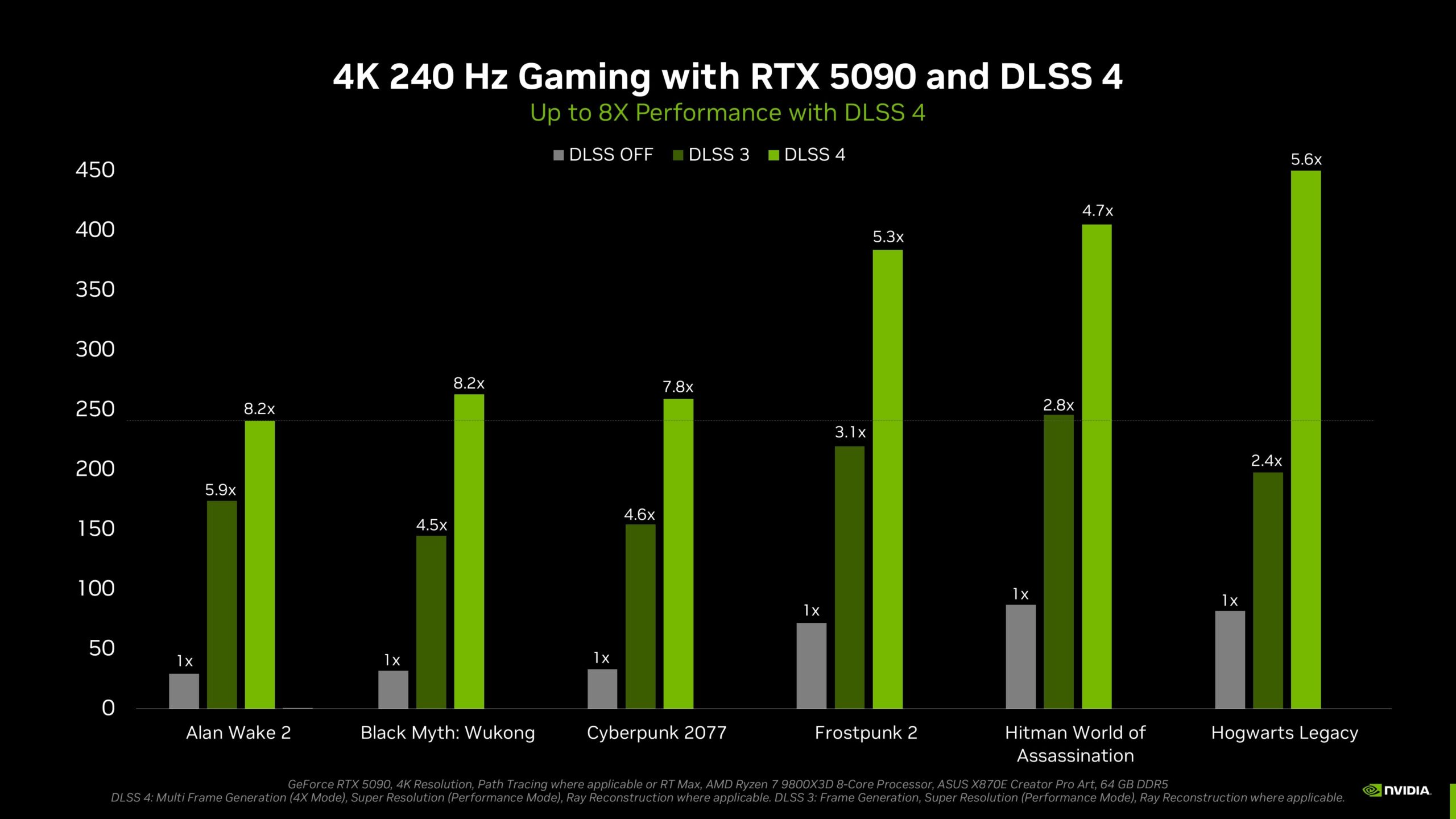
Many of Nvidia’s most ostentatious performance claims—including the one that the RTX 5070 is as fast as a 4090—factors in DLSS 4’s additional AI-generated frames. Credit: Nvidia
When launching new 40-series cards over the last two years, it was common for Nvidia to publish a couple of different performance comparisons to last-gen cards: one with DLSS turned off and one with DLSS and the 40-series-exclusive Frame Generation feature turned on. Nvidia would then lean on the DLSS-enabled numbers when making broad proclamations about a GPU’s performance, as it does in its official press release when it says the 5090 is twice as fast as the 4090, or as Huang did during his CES keynote when he claimed that an RTX 5070 offered RTX 4090 performance for $549.
DLSS Frame Generation is an AI feature that builds on what DLSS is already doing. Where DLSS uses AI to fill in gaps and make a lower-resolution image look like a higher-resolution image, DLSS Frame Generation creates entirely new frames and inserts them in between the frames that your GPU is actually rendering.
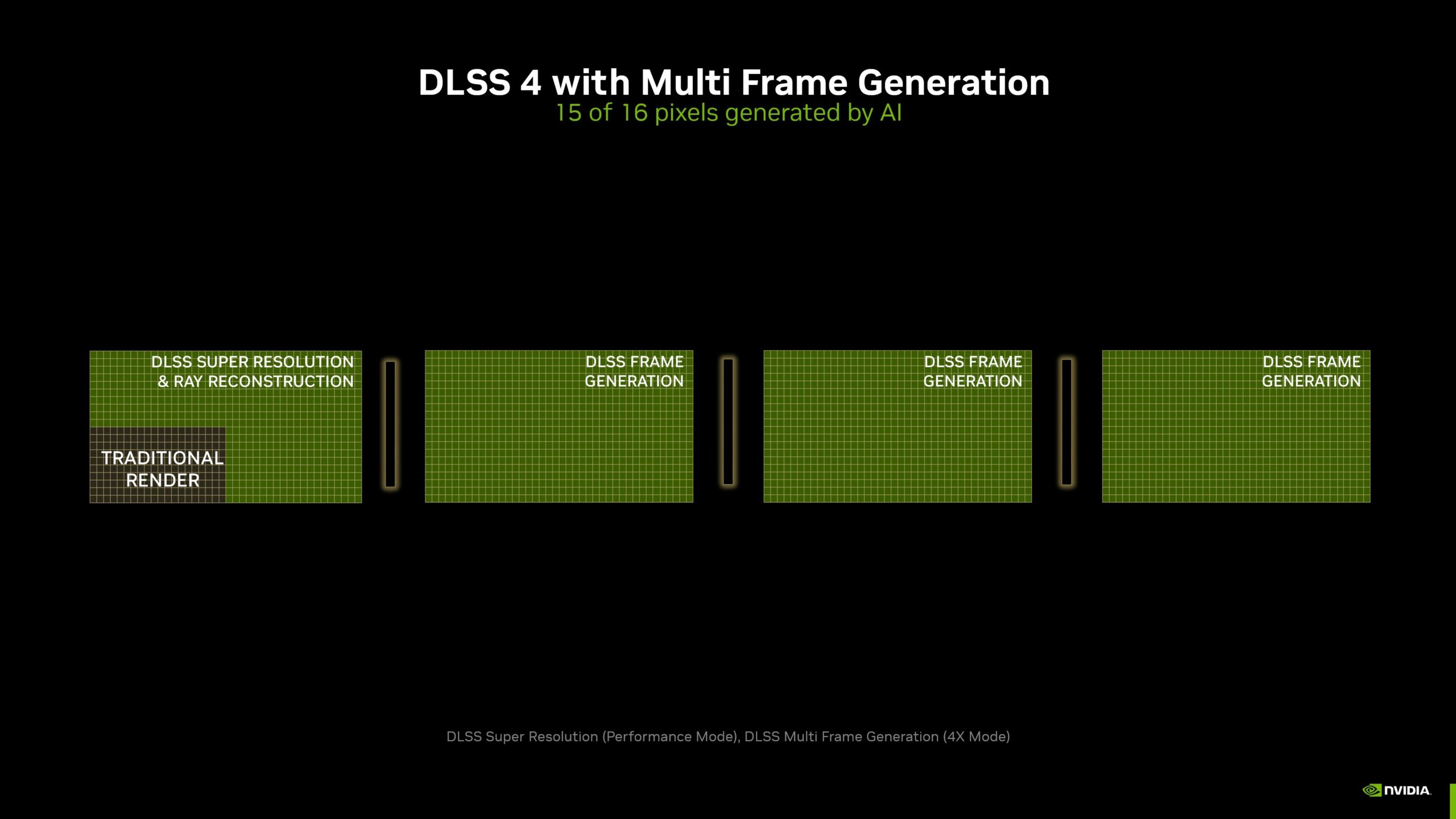
DLSS 4 now generates up to three frames for every frame the GPU is actually rendering. Used in concert with DLSS image upscaling, Nvidia says that “15 out of every 16 pixels” you see on your screen are being generated by its AI models. Credit: Nvidia
The RTX 50-series one-ups the 40-series with DLSS 4, another new revision that’s exclusive to its just-launched GPUs: DLSS Multi Frame Generation. Instead of generating one extra frame for every traditionally rendered frame, DLSS 4 generates “up to three additional frames” to slide in between the ones your graphics card is actually rendering—based on Nvidia’s slides, it looks like users ought to be able to control how many extra frames are being generated, just as they can control the quality settings for DLSS upscaling. Nvidia is leaning on the Blackwell architecture’s faster Tensor Cores, which it says are up to 2.5 times faster than the Tensor Cores in the RTX 40-series, to do the AI processing necessary to upscale rendered frames and to generate new ones.
Nvidia’s performance comparisons aren’t indefensible; with DLSS FG enabled, the cards can put out a lot of frames per second. It’s just dependent on game support (Nvidia says that 75 titles will support it at launch), and going off of our experience with the original iteration of Frame Generation, there will likely be scenarios where image quality is noticeably worse or just “off-looking” compared to actual rendered frames. DLSS FG also needed a solid base frame rate to get the best results, which may or may not be the case for Multi-FG.
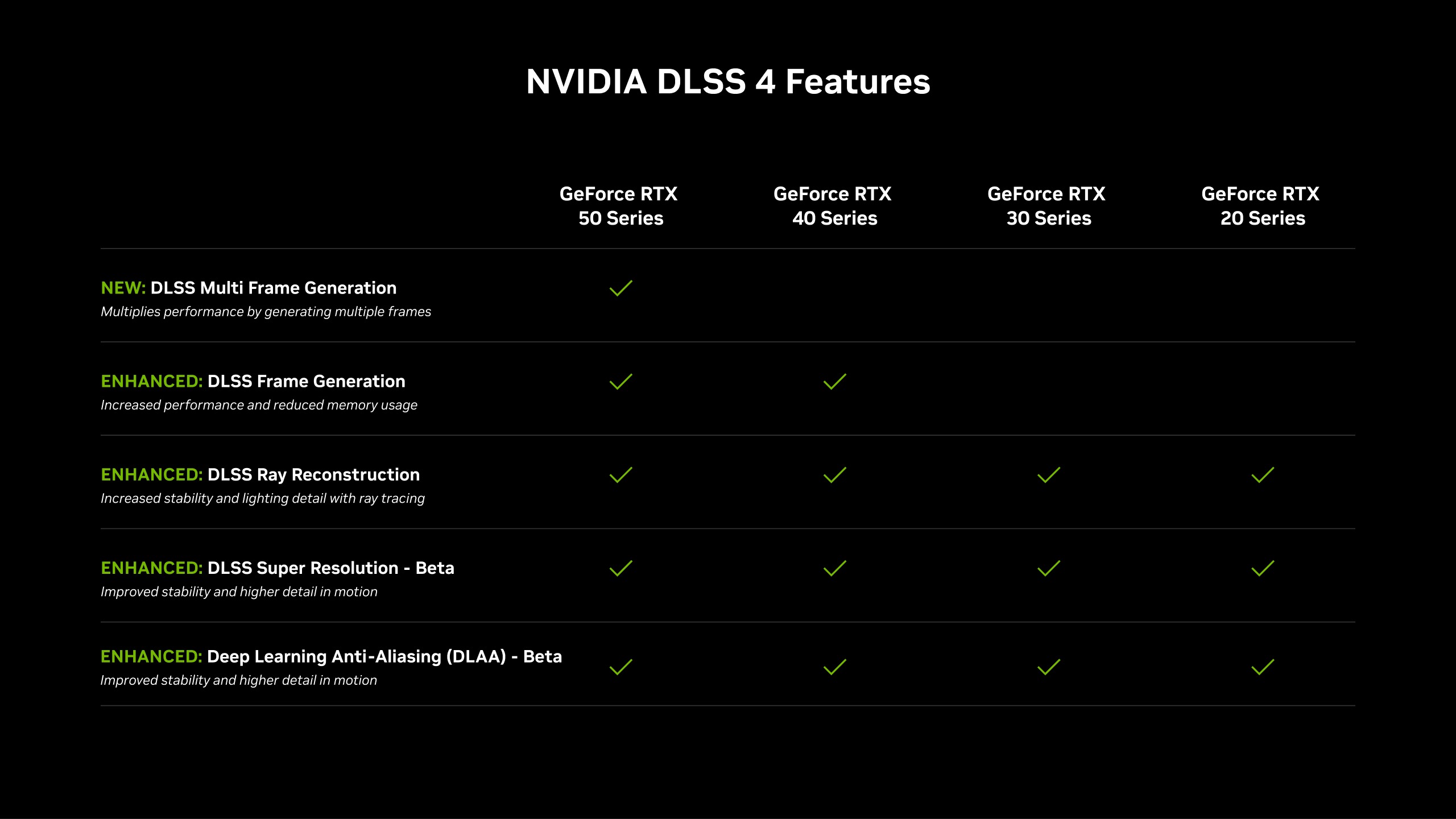
Enhanced versions of older DLSS features can benefit all RTX cards, including the 20-, 30-, and 40-series. Multi-Frame Generation is restricted to the 50-series, though. Credit: Nvidia
Though the practice of restricting the biggest DLSS upgrades to all-new hardware is a bit frustrating, Nvidia did announce that it’s releasing a new transformer module for the DLSS Ray Reconstruction, Super Resolution, and Anti-Aliasing features. These are DLSS features that are available on all RTX GPUs going all the way back to the RTX 20-series, and games that are upgraded to use the newer models should benefit from improved upscaling quality even if they’re using older GPUs.
GeForce 50-series: Also for laptops!
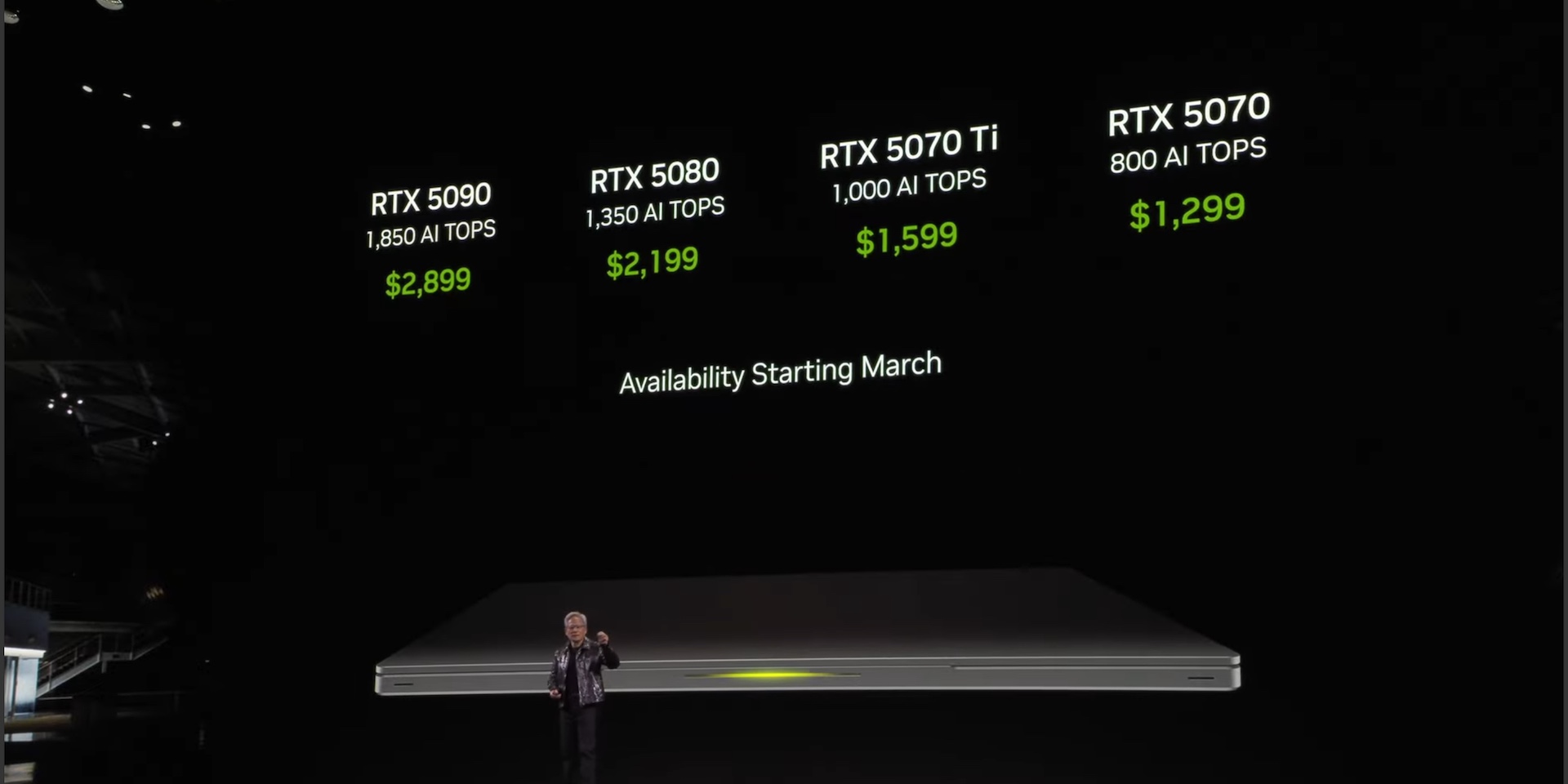
Nvidia’s projected pricing for laptops with each of its new mobile GPUs. Credit: Nvidia
Nvidia’s laptop GPU announcements sometimes trail the desktop announcements by a few weeks or months. But the company has already announced mobile versions of the 5090, 5080, 5070 Ti, and 5070 that Nvidia says will begin shipping in laptops priced between $1,299 and $2,899 when they launch in March.
All of these GPUs share names, the Blackwell architecture, and DLSS 4 support with their desktop counterparts, but per usual they’re significantly cut down to fit on a laptop motherboard and within a laptop’s cooling capacity. The mobile version of the 5090 includes 10,496 GPU cores, less than half the number of the desktop version, and just 24GB of GDDR7 memory on a 256-bit interface instead of 32GB on a 512-bit interface. But it also can operate with a power budget between 95 and 150 W, a fraction of what the desktop 5090 needs.
| RTX 5090 (mobile) | RTX 5080 (mobile) | RTX 5070 Ti (mobile) | RTX 5070 (mobile) | |
|---|---|---|---|---|
| CUDA Cores | 10,496 | 7,680 | 5,888 | 4,608 |
| Memory Bus Width | 256-bit | 256-bit | 192-bit | 128-bit |
| Memory size | 24GB GDDR7 | 16GB GDDR7 | 12GB GDDR7 | 8GB GDDR7 |
| TGP | 95-150 W | 80-150 W | 60-115 W | 50-100 W |
The other three GPUs are mostly cut down in similar ways, and all of them have fewer GPU cores and lower power requirements than their desktop counterparts. The 5070 GPUs both have less RAM and narrowed memory buses, too, but the mobile RTX 5080 at least comes closer to its desktop iteration, with the same 256-bit bus width and 16GB of RAM.
Andrew is a Senior Technology Reporter at Ars Technica, with a focus on consumer tech including computer hardware and in-depth reviews of operating systems like Windows and macOS. Andrew lives in Philadelphia and co-hosts a weekly book podcast called Overdue.
New GeForce 50-series GPUs: There’s the $1,999 5090, and there’s everything else Read More »
